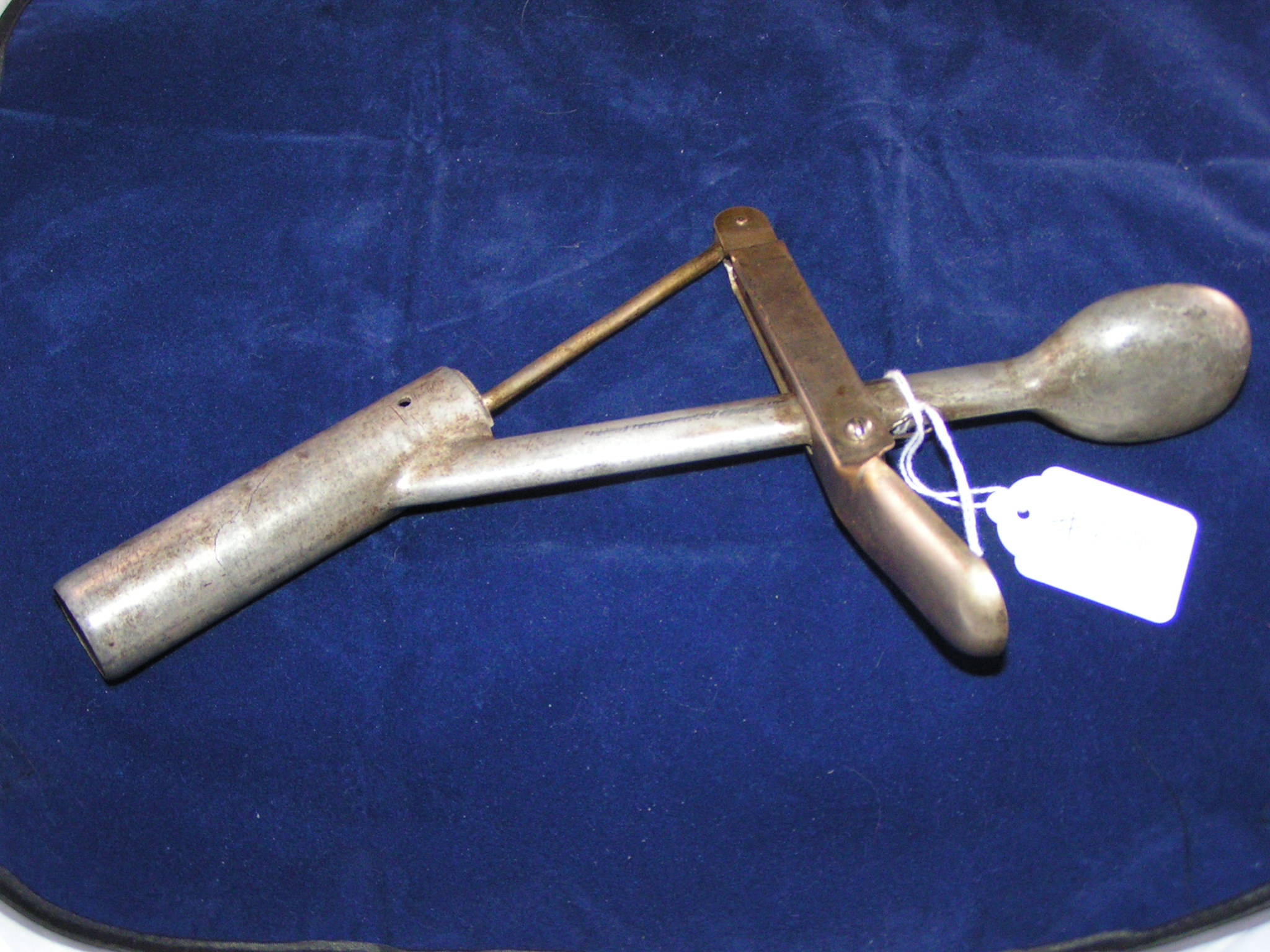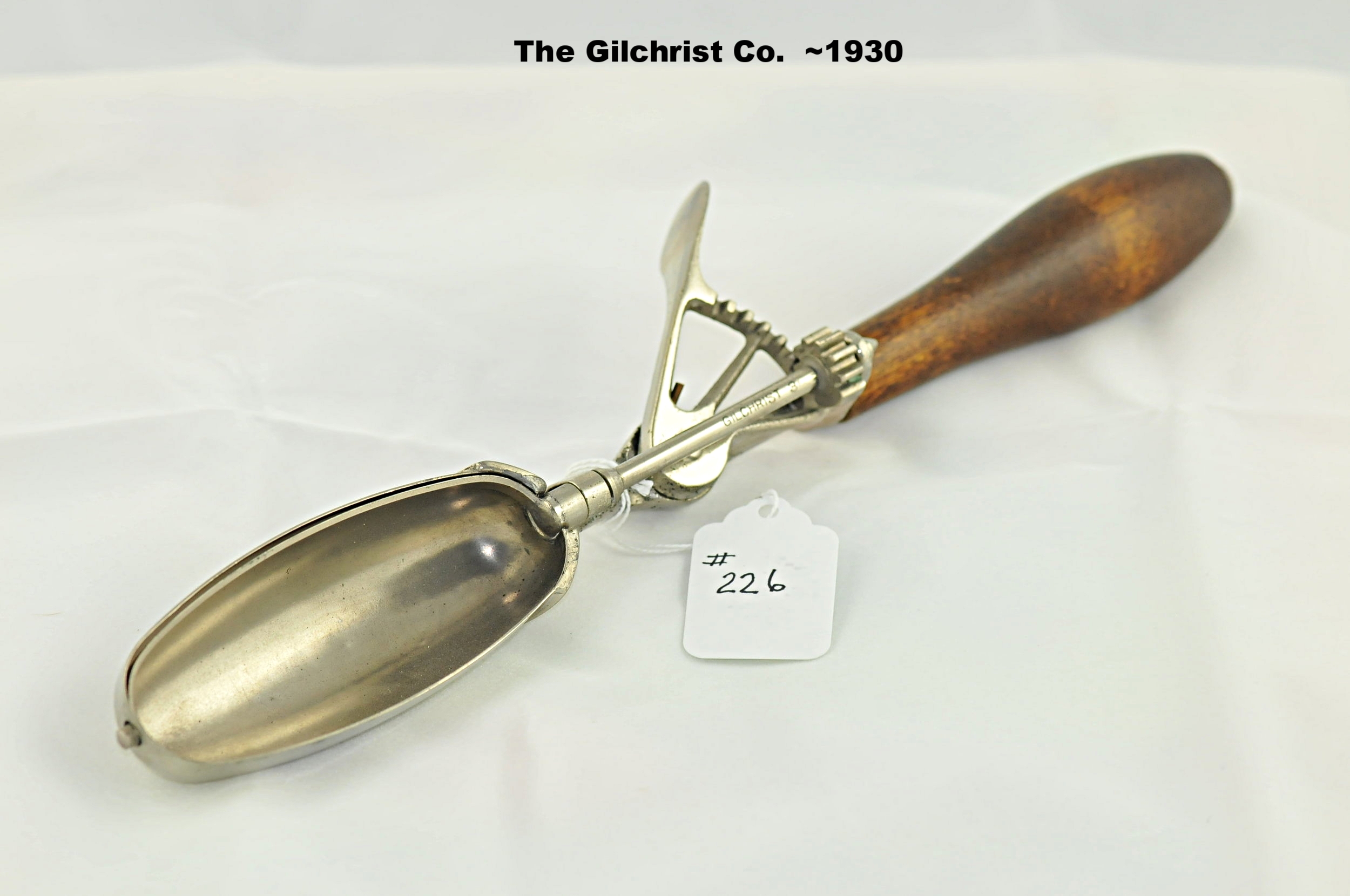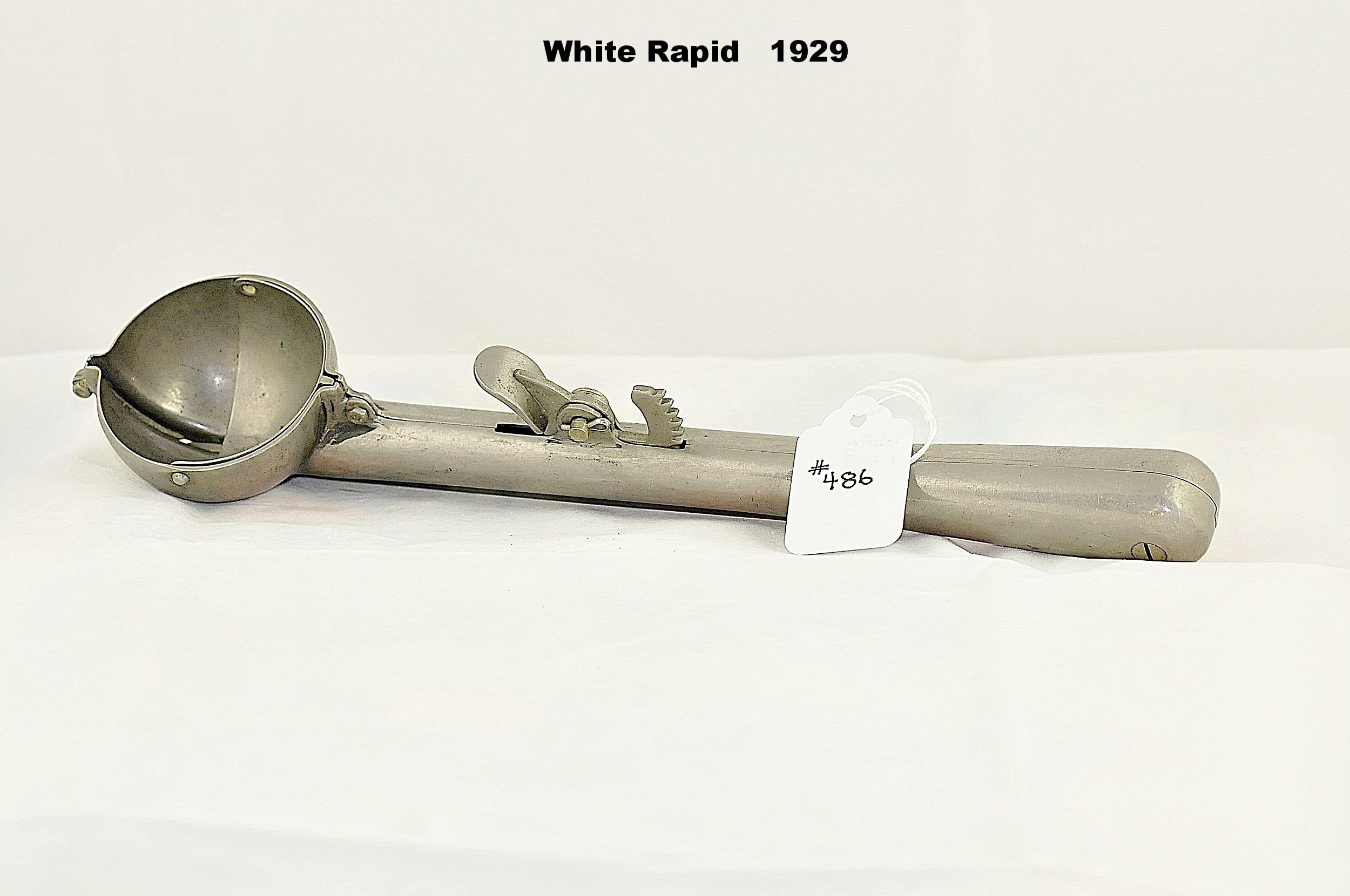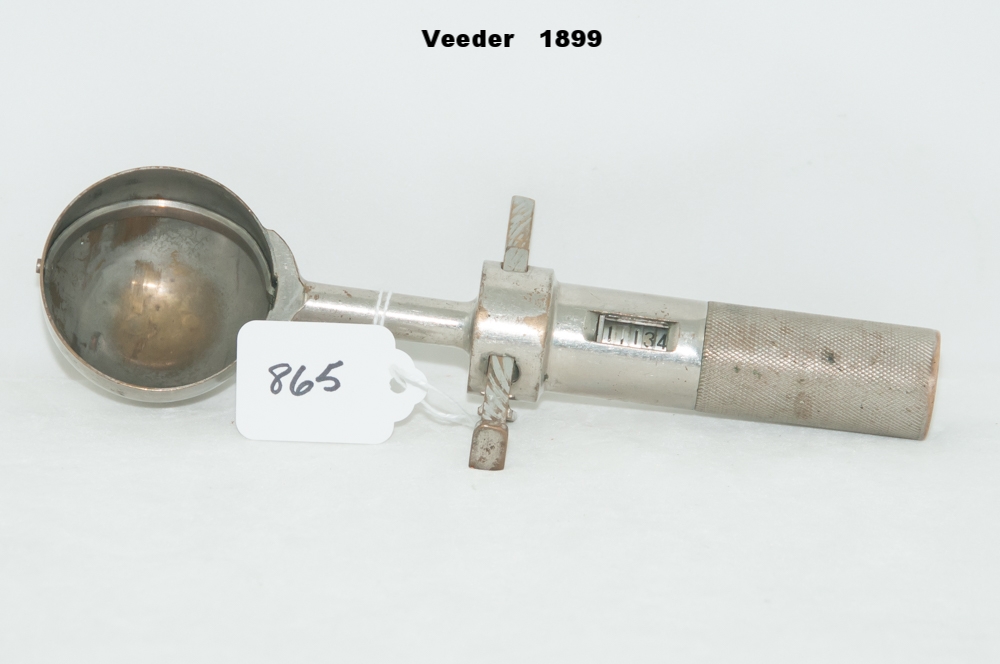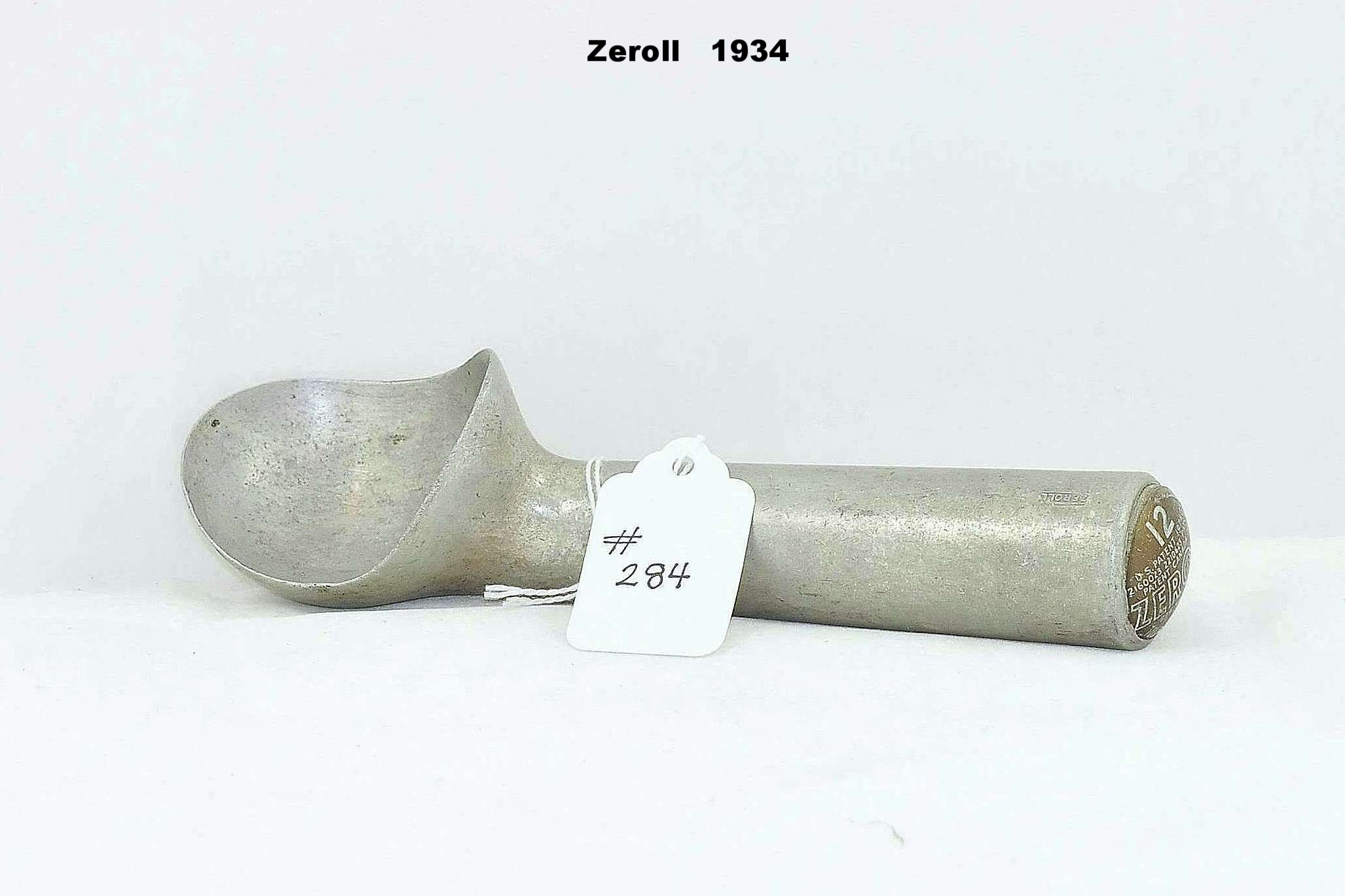Scoop Mechanisms are a topic about how they work. These attributes range from exotic to non-mechanical. I would categorize these features into four groups:
Operator Controls, Serving Release Schemes, Appendages (Slicers), and Catch-All
Operator controls
The Operator controls include thumb-operated levers, pushbuttons, handle squeezers, and shaft pushing operations.
The natural strength of the thumb is well suited for a scoop with a thumb operator. It also seems natural to roll your wrist with the thumb engaged in placing the serving onto the dish or cone. But what about the left-handed?
Thumb lever Examples……
The squeeze-handled scoops should work for the right or the left-handed servers but rotating your wrist with your hand clinched feels a bit clumsy to me. The squeeze handle group includes apparatus that requires both hand and finger squeezes.
Handle squeezer Examples……
The pushbutton-operated scoops might be a comfortable mechanism for the server. They certainly would not work well for a left-hander. These pushbutton examples differ from the shaft push examples because of the additional internal mechanisms redirecting the operator’s force. These might be hard to clean.
Pushbutton Examples……
The shaft push mechanisms you see on many sandwich scoops may be a two-handed operation for some. Larger hands would help. It should work the same for the right hand or the left. With the shaft push mechanisms, the operator’s force is directly applied to the serving removal.
Shaft push Examples……
Serving Release Schemes
The serving release scheme is a category for the various mechanisms that dislodge the serving due to the operator action discussed above. Generally, this will be a wiper of sorts that clears the bowl of the serving. But, wiper mechanisms vary in shape size, and number.
Wipers that travel 180 degrees across the bowl's surface are the most common.
Some have more than one wiper.
Some have wipers that move from side to side, and others move from back to front.
Some have wipers that are stationery and the bowl moves.
Appendages
An Appendage category is for devices with apparatus to remove excess ice cream from the top of the bowl to ensure consistent serving size. These “slicers” can be an arm that cuts across the bowl or a guillotine with a circular cutter. This cutting action can be the result of a single operator action, or it may require two separate actions.
Catch-All
A Catch-All category would be for any additional mechanisms that are not otherwise discussed.
One such mechanism is a veeder counter that is built into a scoop to track the number of servings.
Some are designed for filling ice cream cones. The cone would be placed into the scoop before the dipping action occurs. Then a mechanism would lift the filled cone from the device.
Others just don’t follow any normal conventions.
Conclusions
It would seem that if you rated a scoop based on the mechanisms included, the collector’s opinion would likely differ from that of a server. As a collector, you might choose the most elaborate and least practical device ever made. As a user, you would want a tool to do the job with the least amount of effort. In the early days of ice cream scoops, this was evident in the models of scoops that sold best. Of course, with anything, both the price and the marketing of an item have a lot to do with good sales. But, the other big factor is how the user likes an item. An easy-to-use scoop that was easy to clean and adequately robust would be the best seller. Gilchrist Co. proved this theory. I don’t know how many of the Model 31 scoops were made but based on the number that is still available, it must have been a lot.
However, the best scoop based on mechanisms must have been the scoop without a mechanism. In 1934 The Zeroll Co received a patent for a non-mechanical scoop with a hollow body filled with a defrosting liquid. This so-called “antifreeze” scoop reportedly eliminated ice pellets on the surface of the serving. I believe that some accredited it with non-stick characteristics. It is very easy to use. It is easy to clean, It is robust. It is to this day one of the most commonly used ice cream scoops. To some extent, this scoop ended the race to find the best tool for serving ice cream. Did I mention that it is plain and does nothing but serve ice cream?
